Abstract
Pigeons were trained to respond under two conditions with two identical variable-interval schedules of positive reinforcement. While the schedules operated for separate response keys, they were not available concurrently. During one condition, each response was punished with electric shock. During the other condition, shocks were delivered independently of responding. The punishment suppressed responding but the free shocks did not. However, when allowed to choose, the pigeons preferred the condition associated with the lowest rate of shock regardless of whether or not the shock was dependent on responding. In general, shocks exerted their greatest effect on whichever response had the greatest influence on shocks. In this respect, punishment is instrumental in suppressing behavior and the properties of punishment are symmetrical to those of reinforcement. This empirical symmetry dictates a corresponding conceptual symmetry in terms of a positive law of effect accounting for response increments and a negative law accounting for response decrements.
Full text
PDF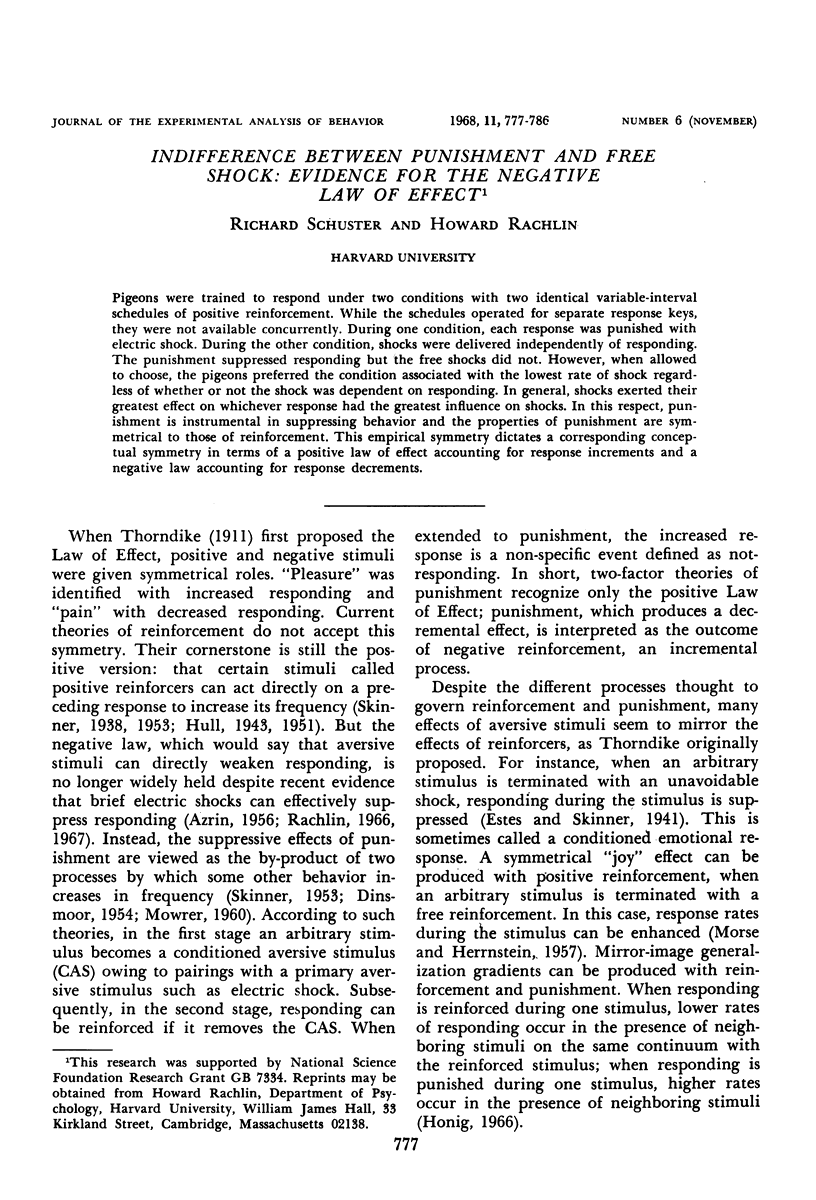
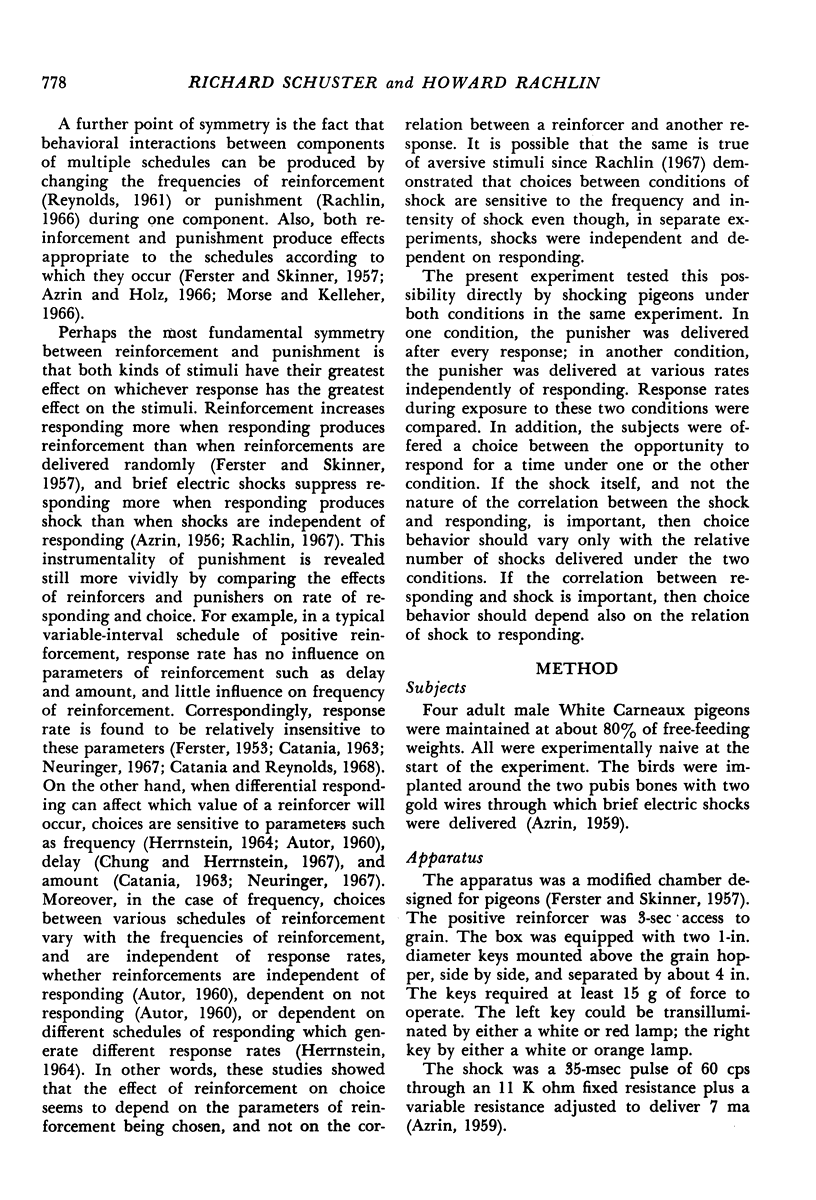
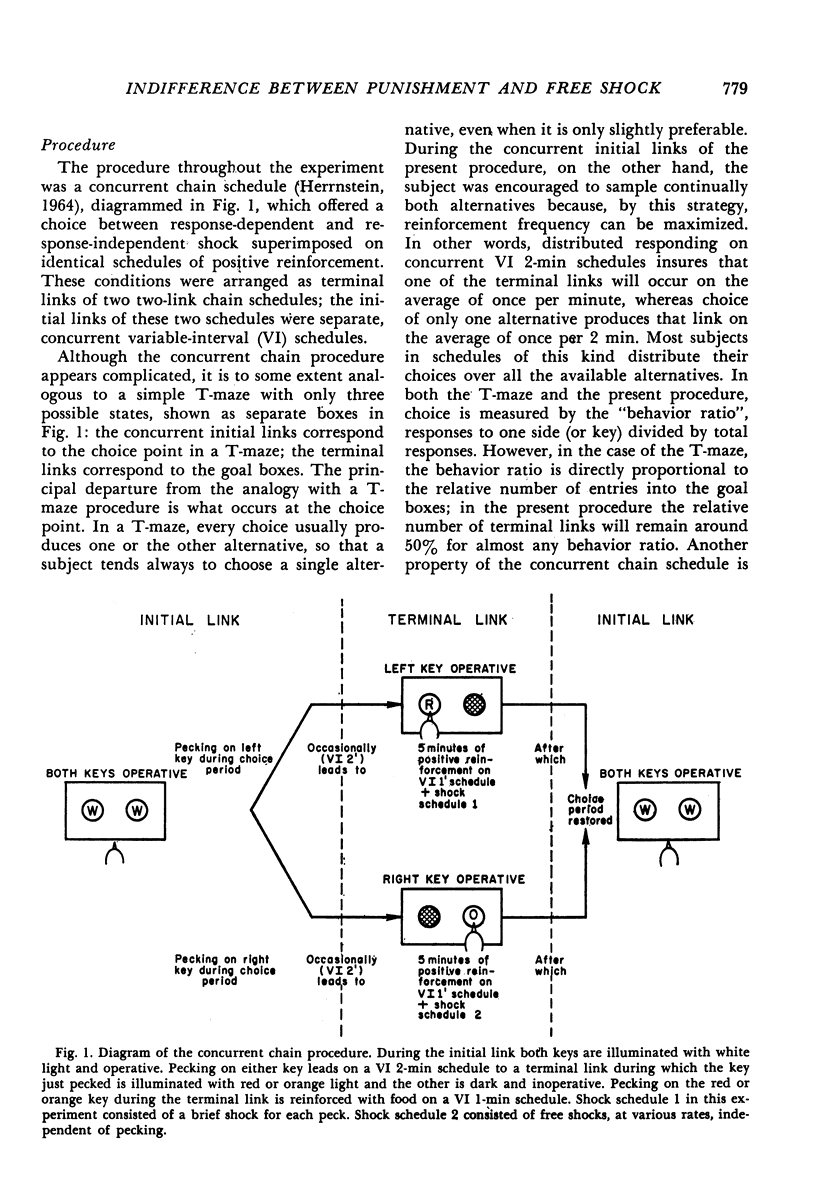
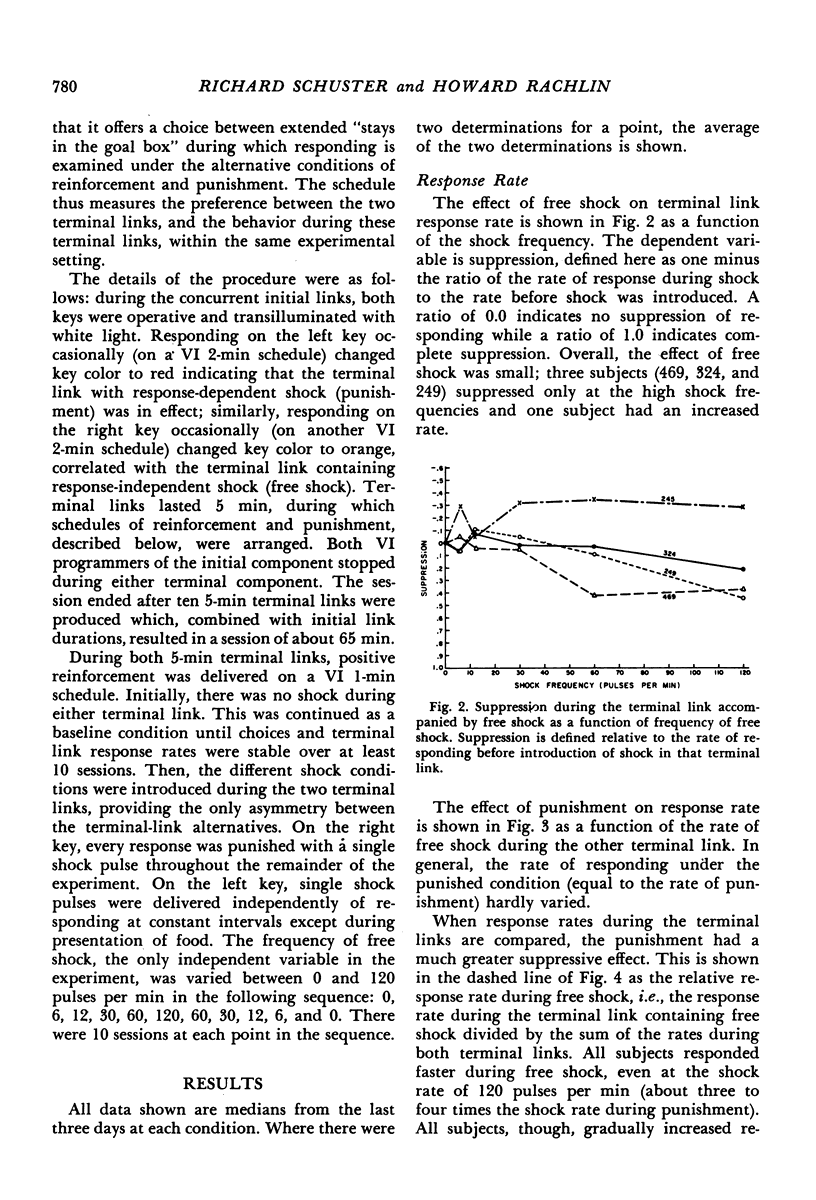
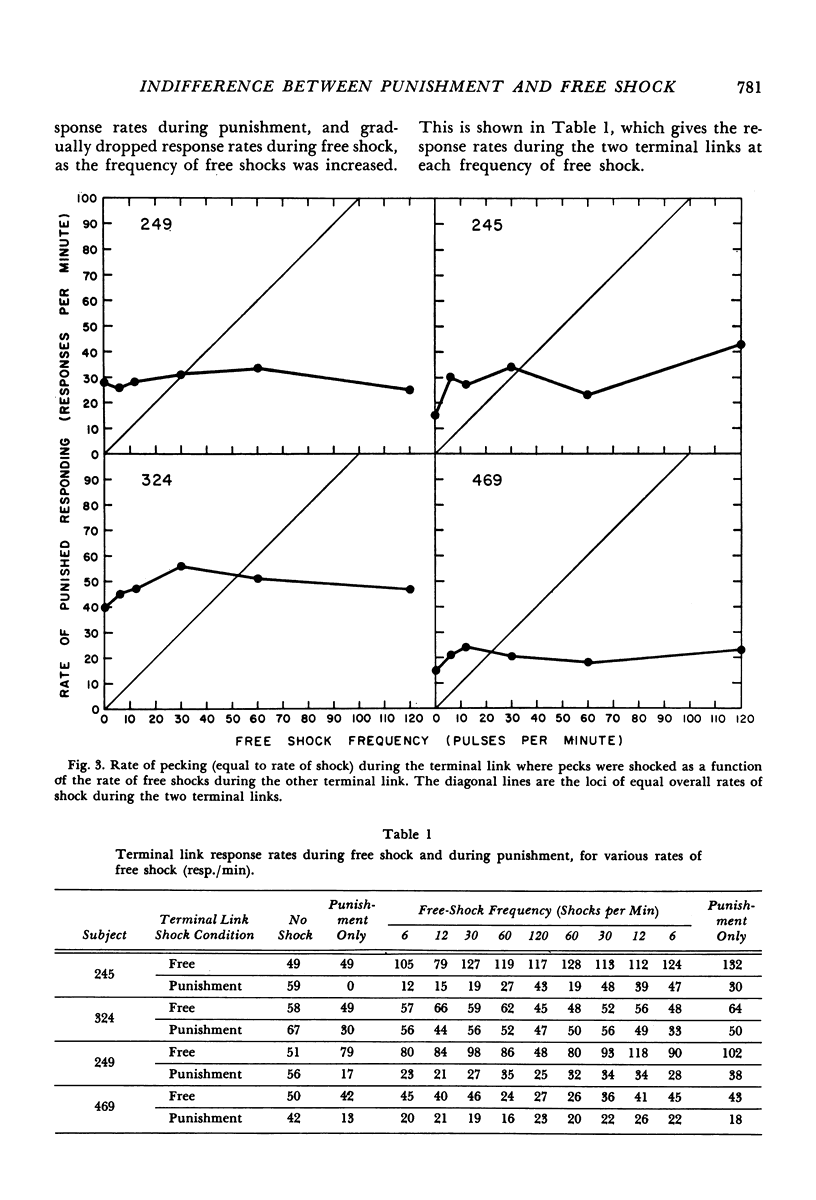
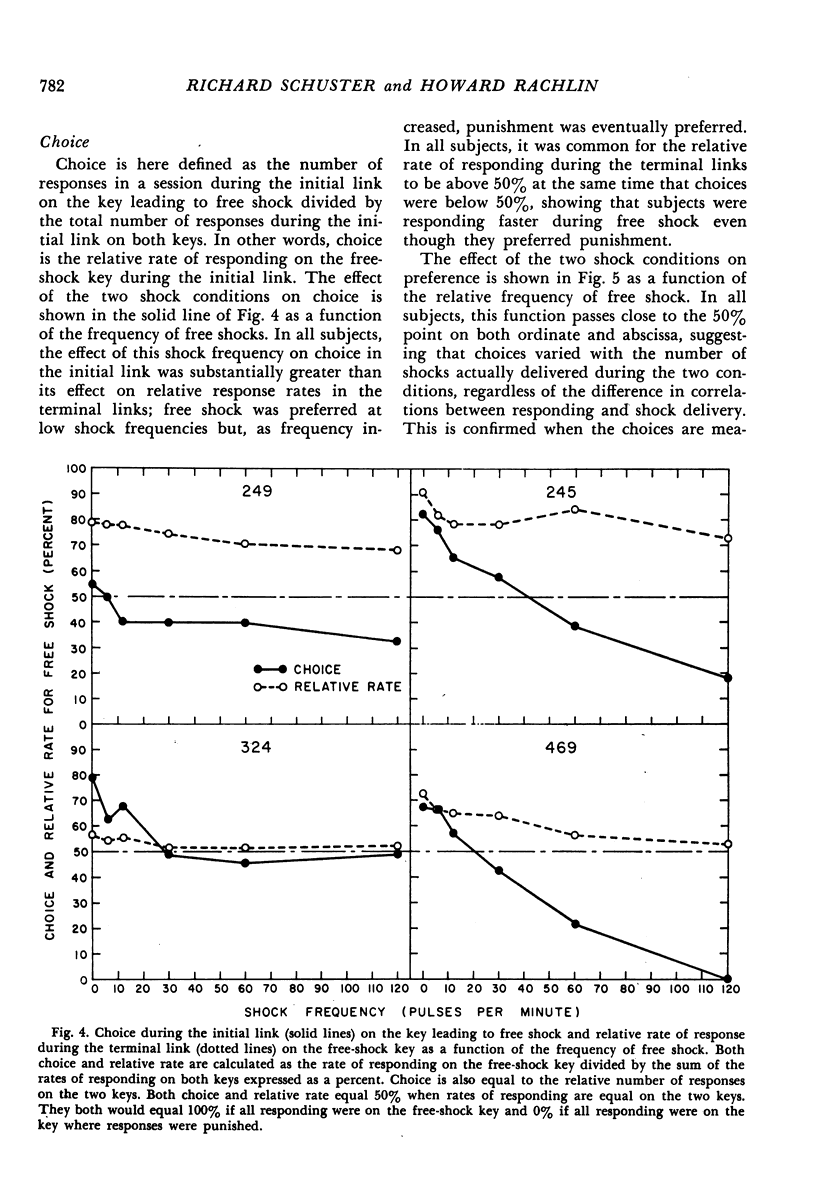
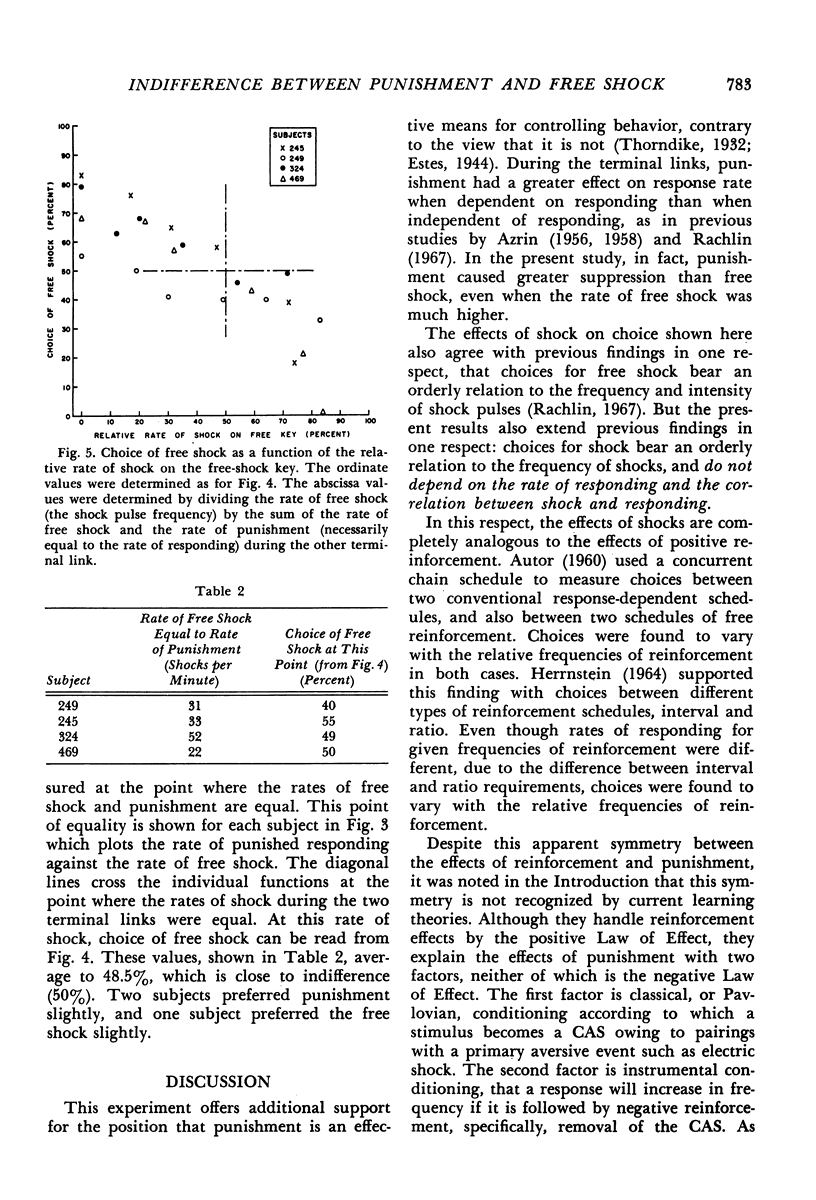
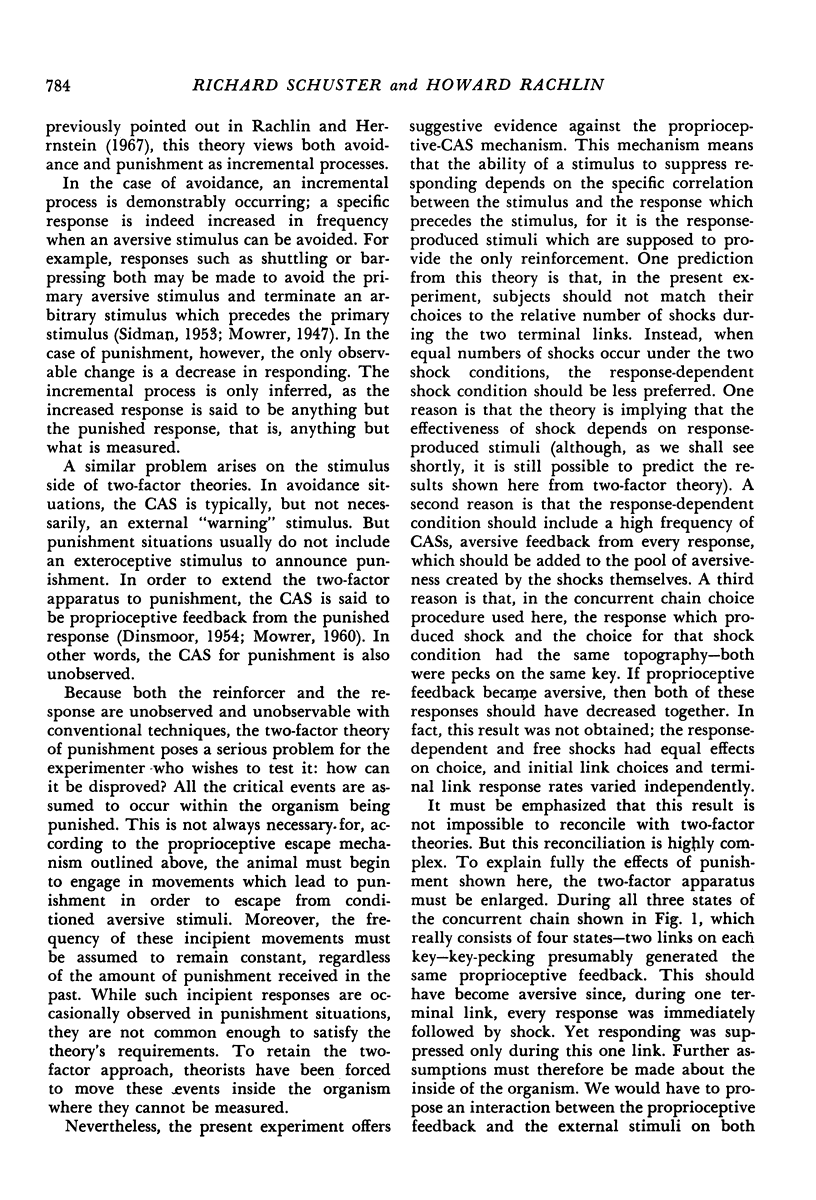
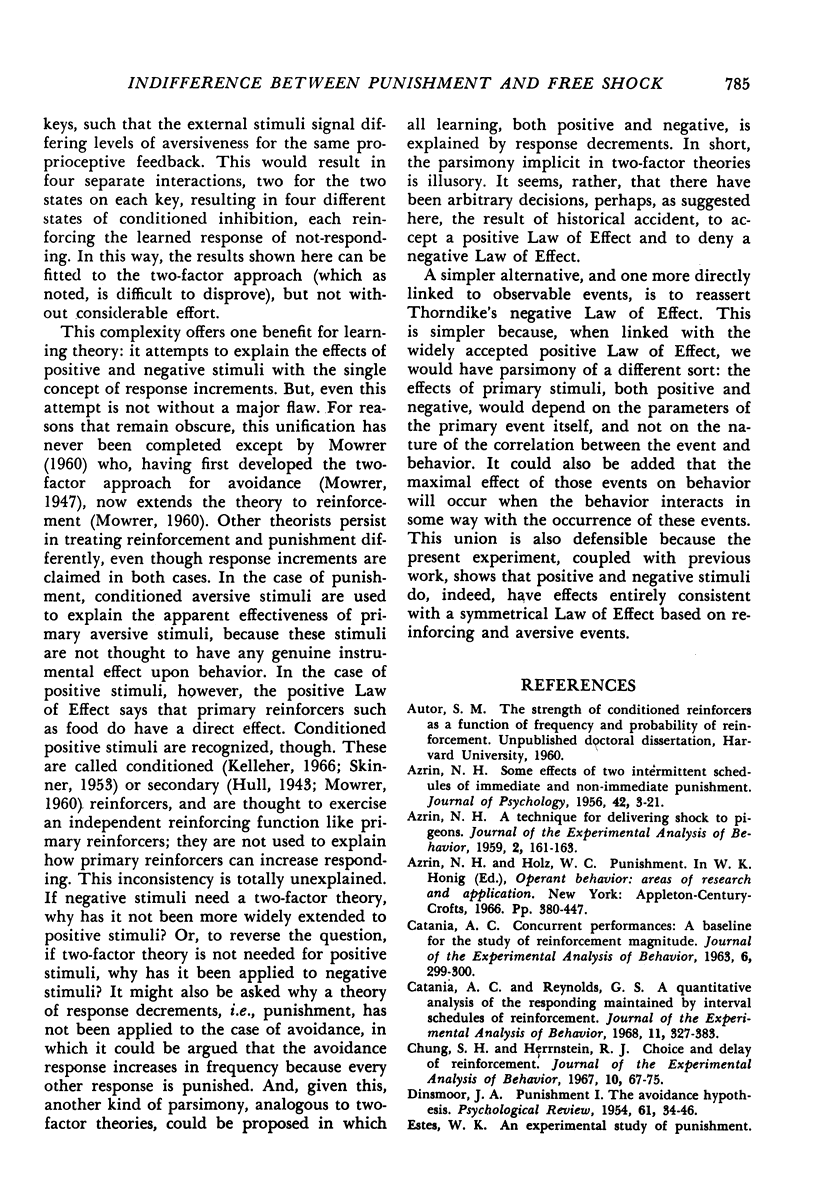
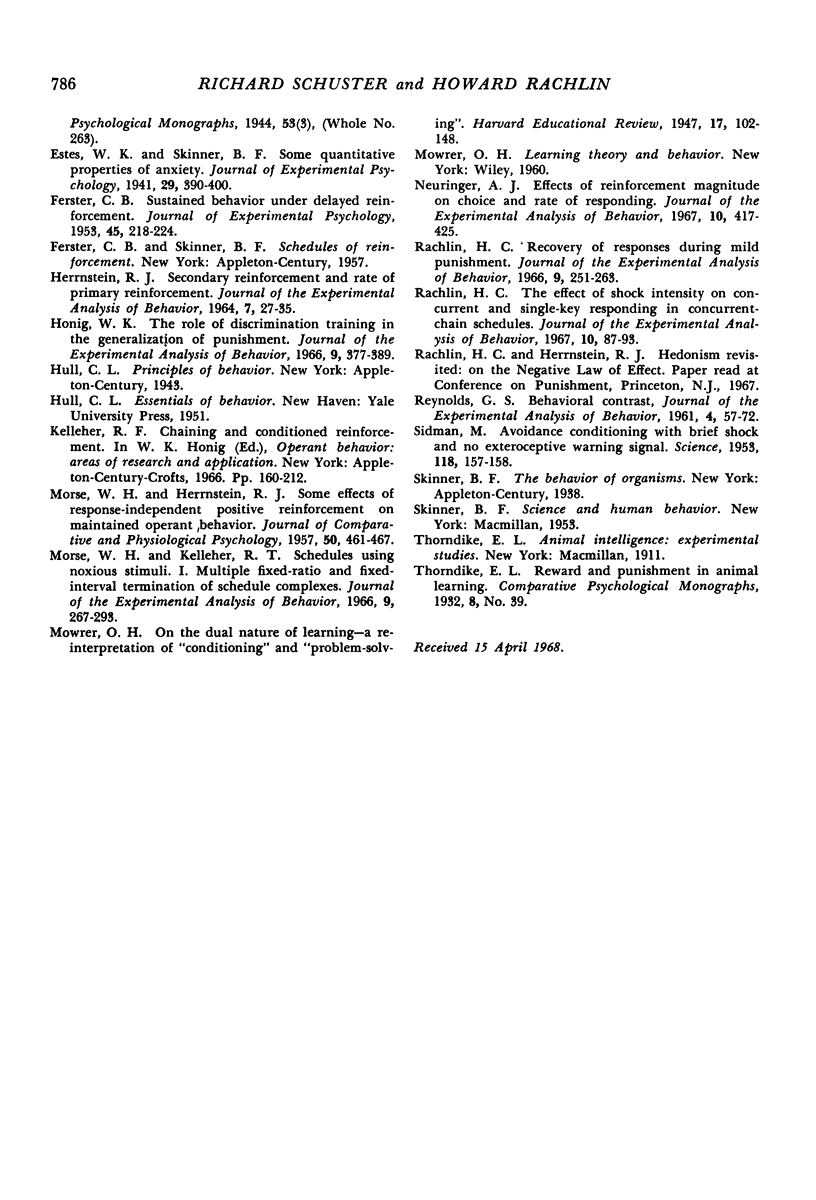
Selected References
These references are in PubMed. This may not be the complete list of references from this article.
- AZRIN N. H. A technique for delivering shock to pigeons. J Exp Anal Behav. 1959 Apr;2:161–163. doi: 10.1901/jeab.1959.2-161. [DOI] [PMC free article] [PubMed] [Google Scholar]
- CATANIA A. C. Concurrent performances: a baseline for the study of reinforcement magnitude. J Exp Anal Behav. 1963 Apr;6:299–300. doi: 10.1901/jeab.1963.6-299. [DOI] [PMC free article] [PubMed] [Google Scholar]
- Catania A. C., Reynolds G. S. A quantitative analysis of the responding maintained by interval schedules of reinforcement. J Exp Anal Behav. 1968 May;11(3 Suppl):327–383. doi: 10.1901/jeab.1968.11-s327. [DOI] [PMC free article] [PubMed] [Google Scholar]
- Chung S. H., Herrnstein R. J. Choice and delay of reinforcement. J Exp Anal Behav. 1967 Jan;10(1):67–74. doi: 10.1901/jeab.1967.10-67. [DOI] [PMC free article] [PubMed] [Google Scholar]
- DINSMOOR J. A. Punishment. I. The avoidance hypothesis. Psychol Rev. 1954 Jan;61(1):34–46. doi: 10.1037/h0062725. [DOI] [PubMed] [Google Scholar]
- FERSTER C. B. Sustained behavior under delayed reinforcement. J Exp Psychol. 1953 Apr;45(4):218–224. doi: 10.1037/h0062158. [DOI] [PubMed] [Google Scholar]
- HERRNSTEIN R. J., MORSE W. H. Some effects of response-independent positive reinforcement on maintained operant behavior. J Comp Physiol Psychol. 1957 Oct;50(5):461–467. doi: 10.1037/h0041506. [DOI] [PubMed] [Google Scholar]
- HERRNSTEIN R. J. SECONDARY REINFORCEMENT AND RATE OF PRIMARY REINFORCEMENT. J Exp Anal Behav. 1964 Jan;7:27–36. doi: 10.1901/jeab.1964.7-27. [DOI] [PMC free article] [PubMed] [Google Scholar]
- Honig W. K. The role of discrimination training in the generalization of punishment. J Exp Anal Behav. 1966 Jul;9(4):377–384. doi: 10.1901/jeab.1966.9-377. [DOI] [PMC free article] [PubMed] [Google Scholar]
- Morse W. H., Kelleher R. T. Schedules using noxious stimuli. I. Multiple fixed-ratio and fixed-interval termination of schedule complexes. J Exp Anal Behav. 1966 May;9(3):267–290. doi: 10.1901/jeab.1966.9-267. [DOI] [PMC free article] [PubMed] [Google Scholar]
- Neuringer A. J. Effects of reinforcement magnitude on choice and rate of responding. J Exp Anal Behav. 1967 Sep;10(5):417–424. doi: 10.1901/jeab.1967.10-417. [DOI] [PMC free article] [PubMed] [Google Scholar]
- Rachlin H. Recovery of responses during mild punishment. J Exp Anal Behav. 1966 May;9(3):251–263. doi: 10.1901/jeab.1966.9-251. [DOI] [PMC free article] [PubMed] [Google Scholar]
- Rachlin H. The effect of shock intensity on concurrent and single-key responding in concurrent-chain schedules. J Exp Anal Behav. 1967 Jan;10(1):87–93. doi: 10.1901/jeab.1967.10-87. [DOI] [PMC free article] [PubMed] [Google Scholar]
- SIDMAN M. Avoidance conditioning with brief shock and no exteroceptive warning signal. Science. 1953 Aug 7;118(3058):157–158. doi: 10.1126/science.118.3058.157. [DOI] [PubMed] [Google Scholar]


